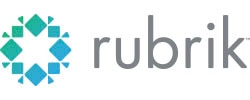May 24, 2024
How a Modernized IT Environment Supports Digital Government
A strategic approach can help federal agencies operate more efficiently and carry out their missions more effectively.
Modernizing IT ecosystems has become crucial to mission success for federal agencies. Modernized applications and infrastructure enhance performance, improve the user experience and streamline compliance. However, existing systems, technical debt and budget constraints all pose formidable challenges. By working with trusted partners to modernize their computing, networking and storage environments, agencies can lay the foundation for technology environments that allow users to stay focused on their missions.
Often, this transformation will include significant migration of resources to the cloud. Merely making investments in new solutions is not enough to fuel government digital transformation. It is important for IT leaders to pursue modernization efforts guided by an overarching strategy that aligns with their long-term goals.
When done effectively, modernization can help agencies attract and retain talent, maximize their ROI, achieve new insights, and lengthen the life of their technology assets, establishing a nimble environment capable of adapting to a changing world.
How quickly can your agency adapt to IT changes?
Modernizing IT ecosystems has become crucial to mission success for federal agencies. Modernized applications and infrastructure enhance performance, improve the user experience and streamline compliance. However, existing systems, technical debt and budget constraints all pose formidable challenges. By working with trusted partners to modernize their computing, networking and storage environments, agencies can lay the foundation for technology environments that allow users to stay focused on their missions.
Often, this transformation will include significant migration of resources to the cloud. Merely making investments in new solutions is not enough to fuel government digital transformation. It is important for IT leaders to pursue modernization efforts guided by an overarching strategy that aligns with their long-term goals.
When done effectively, modernization can help agencies attract and retain talent, maximize their ROI, achieve new insights, and lengthen the life of their technology assets, establishing a nimble environment capable of adapting to a changing world.
How quickly can your agency adapt to IT changes?

Digital transformation has taken IT departments in all sectors by storm in recent years, and with good reason. The potential to uncover new insights and improve operations using data has never been greater, yet existing systems can hamstring organizations as they seek to achieve these benefits.
This is especially true for federal agencies, which must contend with tight budget constraints and strict security requirements as they tackle IT modernization initiatives. Moreover, these challenges are exactly why agencies need modernized IT environments. Many agencies have a significant amount of technical debt, which can both increase IT costs and expose organizations to unacceptable levels of risk. An effective IT modernization effort can streamline regulatory compliance, boost security and increase automation to reduce human error. The federal government has an aging workforce, and agencies risk losing skills and institutional knowledge as longtime employees retire from the public sector. These agencies must embrace digital transformation to help them fill these gaps.
1,470
The number of data centers the federal government is operating as of January 2023, having closed 736 data centers from 2016 to 2022
Source: itdashboard.gov, “Data Center Information,” May 14, 2024
Broadly speaking, there are two key elements to IT modernization: applications and infrastructure. There is often a massive amount of duplication across different applications, which can serve as the basis for the adoption of microservices and containerization, both necessary for cloud-native apps that can run in practically any environment. Rather than pouring their scarce budget dollars into the maintenance of outdated systems, agencies that embrace application modernization can improve their user experience with an application environment that rivals those of the most innovative private sector companies. To update their app environments, most agencies will also need to embrace infrastructure modernization, seeking out the software-defined infrastructure solutions and cloud resources that will best support the needs of their unique workloads.
Beyond the technology itself, IT modernization requires agencies to update their procedures, practices and training. For instance, cyber resilience and effective incident response should be core tenets of IT modernization, but these outcomes are often largely the result of people and policies rather than new technology solutions.
While most federal IT leaders recognize the need to modernize, they may be unsure of where to start or how they can make transformative changes to their technology environments within their budgetary and regulatory frameworks. This is where a trusted third-party partner can help. A partner can assess the current environment, draft a blueprint for modernization and help implement the changes that will help agencies keep up with the ongoing evolution of technology.
The Need to Modernize Federal IT
Digital transformation has taken IT departments in all sectors by storm in recent years, and with good reason. The potential to uncover new insights and improve operations using data has never been greater, yet existing systems can hamstring organizations as they seek to achieve these benefits.
This is especially true for federal agencies, which must contend with tight budget constraints and strict security requirements as they tackle IT modernization initiatives. Moreover, these challenges are exactly why agencies need modernized IT environments. Many agencies have a significant amount of technical debt, which can both increase IT costs and expose organizations to unacceptable levels of risk. An effective IT modernization effort can streamline regulatory compliance, boost security and increase automation to reduce human error. The federal government has an aging workforce, and agencies risk losing skills and institutional knowledge as longtime employees retire from the public sector. These agencies must embrace digital transformation to help them fill these gaps.
1,470
The number of data centers the federal government is operating as of January 2023, having closed 736 data centers from 2016 to 2022
Source: itdashboard.gov, “Data Center Information,” May 14, 2024
Broadly speaking, there are two key elements to IT modernization: applications and infrastructure. There is often a massive amount of duplication across different applications, which can serve as the basis for the adoption of microservices and containerization, both necessary for cloud-native apps that can run in practically any environment. Rather than pouring their scarce budget dollars into the maintenance of outdated systems, agencies that embrace application modernization can improve their user experience with an application environment that rivals those of the most innovative private sector companies. To update their app environments, most agencies will also need to embrace infrastructure modernization, seeking out the software-defined infrastructure solutions and cloud resources that will best support the needs of their unique workloads.
Beyond the technology itself, IT modernization requires agencies to update their procedures, practices and training. For instance, cyber resilience and effective incident response should be core tenets of IT modernization, but these outcomes are often largely the result of people and policies rather than new technology solutions.
While most federal IT leaders recognize the need to modernize, they may be unsure of where to start or how they can make transformative changes to their technology environments within their budgetary and regulatory frameworks. This is where a trusted third-party partner can help. A partner can assess the current environment, draft a blueprint for modernization and help implement the changes that will help agencies keep up with the ongoing evolution of technology.
Federal IT Modernization: By the Numbers
$95B
The amount that federal agencies planned to spend on IT investments during the 2024 fiscal year (not counting $37 billion in planned Defense Department spending for unclassified national security systems, classified IT and classified cyberspace)
Source: Government Accountability Office, “Information Technology: Federal Agencies Are Making Progress in Implementing GAO Recommendations,” December 2023
34%
The percentage of government IT professionals who identified Software as a Service as the most frequently used purchasing method to procure new IT tools and services for their agencies
Source: CDW, “2024 CDW Cybersecurity Research Report,” May 2024
85%
The percentage of government IT professionals who said their agencies are somewhat or very prepared to respond to a cybersecurity incident
Source: CDW, “2024 CDW Cybersecurity Research Report,” May 2024
Federal IT Modernization: By the Numbers
$95B
The amount that federal agencies planned to spend on IT investments during the 2024 fiscal year (not counting $37 billion in planned Defense Department spending for unclassified national security systems, classified IT and classified cyberspace)
Source: Government Accountability Office, “Information Technology: Federal Agencies Are Making Progress in Implementing GAO Recommendations,” December 2023
34%
The percentage of government IT professionals who identified Software as a Service as the most frequently used purchasing method to procure new IT tools and services for their agencies
Source: CDW, “2024 CDW Cybersecurity Research Report,” May 2024
85%
The percentage of government IT professionals who said their agencies are somewhat or very prepared to respond to a cybersecurity incident
Source: CDW, “2024 CDW Cybersecurity Research Report,” May 2024
- MODERNIZATION FOUNDATIONS
- MODERNIZATIONS STRATEGIES
- MODERNIZATION BENEFITS
Federal IT ecosystems are vast and complex, with numerous interdependencies. To truly modernize their approaches to technology, agencies must not only make targeted investments in new systems and applications but also assess and update their entire IT infrastructure.
NETWORKING: A fast, robust, reliable network is a prerequisite for nearly all modernization initiatives. To effectively leverage emerging technologies such as artificial intelligence (AI) and the Internet of Things, agencies need network infrastructure that will guarantee superior performance to enable scalability over time. In addition to replacing aging switches, routers and wireless access points, federal IT leaders are exploring and implementing connectivity solutions such as software-defined WAN. This optimizes application performance through intelligent path selection. Visibility and management tools are also important, as they help ensure networks continue to perform as expected over time.
PROCESSING: As agencies expand their use of AI and advanced data analytics, they need to ensure their computing infrastructure can keep up. Servers have evolved significantly in recent years, implementing innovations such as new graphics processing units and multicore processors that are needed to handle complex tasks. Agencies running traditional computing infrastructure may find their server environments hamper overall modernization plans. Under the guidance of the Office of Management and Budget, the federal government has made remarkable progress in consolidating data centers, shuttering hundreds in recent years and generating billions of dollars in cost savings.
Click Below to Continue Reading
STORAGE: Effective data management is essential for mission-critical applications such as Big Data analytics, but for federal agencies, it also carries significant accountability and transparency implications. Depending on the use case, agencies may opt for high-performance all-flash arrays, public cloud storage or tiered options that allow the inexpensive storage of archival data. Federal IT leaders must seek out options that provide flexibility and accessibility and ensure compliance with stringent data security standards such as those established by the Federal Information Security Modernization Act and the Federal Risk and Authorization Management Program. In addition to supporting day-to-day operations, storage is a critical component of disaster recovery and business continuity planning.
SECURITY: Reducing cyber risk has long been a top priority in the federal space, as agencies safeguard citizens’ personal and financial data, law enforcement records, and top-secret information with direct national security implications. As the threat landscape grows in both size and sophistication, and as the physical IT perimeter becomes less relevant, government agencies are adopting zero-trust practices to keep their environments safe. Security and IT leaders should also continue to invest in vulnerability assessments, penetration testing and other services that can help them identify and shore up gaps in their environments.
CLOUD: Increasingly, agencies have embraced the public cloud, with some making moves toward a multicloud model. For instance, in 2022, the Department of Defense launched the Joint Warfighting Cloud Capability, a $9 billion effort to migrate on-premises resources to commercial cloud providers including Amazon Web Services, Azure, Google and Oracle. This approach avoids vendor lock-in, gives agencies access to a wider array of services, and enhances resilience and disaster recovery capabilities by distributing resources and dependencies across several platforms. Rather than conducting a simple changeover of existing resources, agencies looking to modernize must update their applications to make them cloud-native by incorporating containers and microservices.
Modernizing federal IT infrastructure is not merely a matter of updating old systems or even adopting new technologies. Rather, IT modernization requires a thoughtful and deliberate approach that aligns with the overarching goals of the agency and government mandates. Without a strategic framework to guide their modernization efforts, agencies risk deploying fragmented or even redundant solutions that address immediate needs but fail to further long-term objectives.
Budget constraints, legacy system dependencies and cybersecurity concerns can all present challenges during an IT modernization initiative. A strategic approach can help agencies overcome these challenges by ensuring top priorities are tackled first, adequate testing is in place, and investments align with zero-trust approaches and other security initiatives.
Application Strategy: Application modernization may be one of the most challenging aspects of IT modernization, requiring a comprehensive understanding of an agency’s software environment, but it also brings some of the greatest rewards. Modernized apps not only improve performance, they also allow agencies to take full advantage of the benefits of the public cloud. Some common goals of application modernization initiatives include increased user satisfaction, heightened efficiency and a reduction in cyber risk. DevSecOps practices can enable these outcomes, with continuous integration/continuous delivery tools helping to reduce the risk of failure by uncovering performance issues earlier in the development process.
Cloud Strategy: Deciding which workloads to migrate to the cloud — and how to migrate them — is a critical component of any IT modernization strategy. In the past, federal IT leaders have sometimes been reluctant to leverage the public cloud due to concerns over data sovereignty, security and cost-effectiveness. However, as public cloud service providers have matured and proved themselves, much of this hesitancy has fallen away. Third-party app modernization assessments can help agency leaders to pinpoint opportunities where the cloud can meet strategic goals for functionality and cost rather than migrating resources via an ineffective “lift and shift” approach.
Software-Defined Infrastructure: These days, IT managers tend to think of infrastructure as a commodity. By making more efficient use of their on-premises infrastructure, agencies can better use and share resources and take advantage of the benefits of virtualization. This will help them attain a cloudlike experience while keeping data and applications in-house. By provisioning infrastructure resources through code, agencies often achieve greater accuracy, improved reliability and enhanced speed. The world of software-defined infrastructure is complex. Agencies must employ application programming interfaces to provision resources such as Terraform, an open-source Infrastructure as Code solution. A comprehensive infrastructure strategy can keep these efforts on track.
Compliance: While many commercial technology executives talk about the need to “move fast and break things,” federal agencies must approach changes to their environments with care, even when accelerating their IT modernization initiatives. This is especially true when it comes to compliance, which can be a major source of risk if it is not embedded into an agency’s modernization strategy. Agencies in the intelligence, defense and national security spaces face a more stringent set of requirements than civilian agencies. As more systems become shared across different departments, compliance becomes even more complicated. By baking security and compliance into new systems from the start, agencies can avoid unwanted surprises later.
Click Below to Continue Reading
What Is SAMA?
In a Strategic Application Modernization Assessment, CDW uses cutting-edge scanning technology, rather than time-consuming interviews, to analyze an organization’s total portfolio based on age, security and complexity.
Apps of all types: In a SAMA engagement, CDW’s experts can scan thousands of different apps with tooling that recognizes more than 40 programming languages. The assessment covers apps developed in-house, third-party solutions, and software that has resulted from mergers and acquisitions.
Comprehensive assessment: A SAMA engagement helps organizations rapidly assess the age, security and complexity of their applications. The assessment also covers cognitive analysis, container construction, mapping to cloud providers, Kubernetes configuration and security best practices, programming languages, and modernization supportability.
Custom reporting: After an assessment, CDW Government provides organizations with detailed reports that include recommendations around potential paths forward. These reports include recommendations for each application: refactor, rewrite, replatform, retire, rehost or retain. Through a SAMA engagement, agency leaders can determine which outcomes will give them the performance they need.
The benefits of effective IT modernization and digital transformation initiatives can reach into all corners of an agency’s operations — and its mission.
Optimize Operations: By automating routine tasks and streamlining complex processes, IT modernization can improve agency operations to be more effective and efficient. The shift not only reduces the errors and rework that frequently accompany manual workflows but also accelerates the delivery of services, freeing up valuable staff time to focus on more strategic projects.
Extend the Life of Legacy Systems: Modernization doesn’t mean replacing an agency’s entire legacy environment. Instead, it involves finding the best path forward for legacy systems, infrastructure and applications. Sometimes, this means replacing existing technologies, but in other instances, agencies can update their tools, integrating them with other solutions and layering on cybersecurity.
Reduce Risk: State-of-the-art cybersecurity features embedded in modernized systems play a pivotal role in reducing organizational risk. A modernized IT environment will proactively address potential vulnerabilities, helping agencies to maintain public trust and prevent breaches that could expose citizens’ private data or even jeopardize national security.
Maximize ROI: Federal agencies operate under unforgiving budget constraints, and every dollar invested into IT systems must yield results. By enhancing both the efficiency and longevity of existing systems — and introducing new technologies with tangible, measurable benefits — IT modernization initiatives ensure that agencies attain the value they are seeking in a cost-effective manner.
Click Below to Continue Reading
Increase Cloud Adoption: An increase in cloud use is an almost inevitable consequence of a comprehensive IT modernization effort, especially for agencies that have significant legacy systems. This, in turn, will allow agencies to attain benefits such as scalability, flexibility and a more predictable operating expenditure cost model.
Attain New Insights: Agencies are generating, collecting and storing more information than ever before. Too often, this data is siloed, making it difficult to synthesize in ways that add value for citizens. Modernization enables technologies such as data analytics and AI to identify hidden trends and patterns to allow more informed decisions.
Attract and Retain Talent: IT professionals who are now entering the workforce have grown up with access to modern technology both at home and at school, and they are not patient when employers’ IT environments fail to meet their standards. A modern workplace attracts tech-savvy professionals and helps to retain top talent by fostering a culture of innovation.
Enable Ongoing Improvement: By modernizing legacy systems and clearing away technical debt, agencies can pave the way for future government digital transformation initiatives. A modernized IT environment will allow for simple integration of new technologies and adaptation to evolving best practices, ensuring that agencies can stay laser-focused on their missions for years to come.
- MODERNIZATION FOUNDATIONS
- MODERNIZATIONS STRATEGIES
- MODERNIZATION BENEFITS
Federal IT ecosystems are vast and complex, with numerous interdependencies. To truly modernize their approaches to technology, agencies must not only make targeted investments in new systems and applications but also assess and update their entire IT infrastructure.
NETWORKING: A fast, robust, reliable network is a prerequisite for nearly all modernization initiatives. To effectively leverage emerging technologies such as artificial intelligence (AI) and the Internet of Things, agencies need network infrastructure that will guarantee superior performance to enable scalability over time. In addition to replacing aging switches, routers and wireless access points, federal IT leaders are exploring and implementing connectivity solutions such as software-defined WAN. This optimizes application performance through intelligent path selection. Visibility and management tools are also important, as they help ensure networks continue to perform as expected over time.
PROCESSING: As agencies expand their use of AI and advanced data analytics, they need to ensure their computing infrastructure can keep up. Servers have evolved significantly in recent years, implementing innovations such as new graphics processing units and multicore processors that are needed to handle complex tasks. Agencies running traditional computing infrastructure may find their server environments hamper overall modernization plans. Under the guidance of the Office of Management and Budget, the federal government has made remarkable progress in consolidating data centers, shuttering hundreds in recent years and generating billions of dollars in cost savings.
Click Below to Continue Reading
STORAGE: Effective data management is essential for mission-critical applications such as Big Data analytics, but for federal agencies, it also carries significant accountability and transparency implications. Depending on the use case, agencies may opt for high-performance all-flash arrays, public cloud storage or tiered options that allow the inexpensive storage of archival data. Federal IT leaders must seek out options that provide flexibility and accessibility and ensure compliance with stringent data security standards such as those established by the Federal Information Security Modernization Act and the Federal Risk and Authorization Management Program. In addition to supporting day-to-day operations, storage is a critical component of disaster recovery and business continuity planning.
SECURITY: Reducing cyber risk has long been a top priority in the federal space, as agencies safeguard citizens’ personal and financial data, law enforcement records, and top-secret information with direct national security implications. As the threat landscape grows in both size and sophistication, and as the physical IT perimeter becomes less relevant, government agencies are adopting zero-trust practices to keep their environments safe. Security and IT leaders should also continue to invest in vulnerability assessments, penetration testing and other services that can help them identify and shore up gaps in their environments.
CLOUD: Increasingly, agencies have embraced the public cloud, with some making moves toward a multicloud model. For instance, in 2022, the Department of Defense launched the Joint Warfighting Cloud Capability, a $9 billion effort to migrate on-premises resources to commercial cloud providers including Amazon Web Services, Azure, Google and Oracle. This approach avoids vendor lock-in, gives agencies access to a wider array of services, and enhances resilience and disaster recovery capabilities by distributing resources and dependencies across several platforms. Rather than conducting a simple changeover of existing resources, agencies looking to modernize must update their applications to make them cloud-native by incorporating containers and microservices.
Modernizing federal IT infrastructure is not merely a matter of updating old systems or even adopting new technologies. Rather, IT modernization requires a thoughtful and deliberate approach that aligns with the overarching goals of the agency and government mandates. Without a strategic framework to guide their modernization efforts, agencies risk deploying fragmented or even redundant solutions that address immediate needs but fail to further long-term objectives.
Budget constraints, legacy system dependencies and cybersecurity concerns can all present challenges during an IT modernization initiative. A strategic approach can help agencies overcome these challenges by ensuring top priorities are tackled first, adequate testing is in place, and investments align with zero-trust approaches and other security initiatives.
Application Strategy: Application modernization may be one of the most challenging aspects of IT modernization, requiring a comprehensive understanding of an agency’s software environment, but it also brings some of the greatest rewards. Modernized apps not only improve performance, they also allow agencies to take full advantage of the benefits of the public cloud. Some common goals of application modernization initiatives include increased user satisfaction, heightened efficiency and a reduction in cyber risk. DevSecOps practices can enable these outcomes, with continuous integration/continuous delivery tools helping to reduce the risk of failure by uncovering performance issues earlier in the development process.
Cloud Strategy: Deciding which workloads to migrate to the cloud — and how to migrate them — is a critical component of any IT modernization strategy. In the past, federal IT leaders have sometimes been reluctant to leverage the public cloud due to concerns over data sovereignty, security and cost-effectiveness. However, as public cloud service providers have matured and proved themselves, much of this hesitancy has fallen away. Third-party app modernization assessments can help agency leaders to pinpoint opportunities where the cloud can meet strategic goals for functionality and cost rather than migrating resources via an ineffective “lift and shift” approach.
Software-Defined Infrastructure: These days, IT managers tend to think of infrastructure as a commodity. By making more efficient use of their on-premises infrastructure, agencies can better use and share resources and take advantage of the benefits of virtualization. This will help them attain a cloudlike experience while keeping data and applications in-house. By provisioning infrastructure resources through code, agencies often achieve greater accuracy, improved reliability and enhanced speed. The world of software-defined infrastructure is complex. Agencies must employ application programming interfaces to provision resources such as Terraform, an open-source Infrastructure as Code solution. A comprehensive infrastructure strategy can keep these efforts on track.
Compliance: While many commercial technology executives talk about the need to “move fast and break things,” federal agencies must approach changes to their environments with care, even when accelerating their IT modernization initiatives. This is especially true when it comes to compliance, which can be a major source of risk if it is not embedded into an agency’s modernization strategy. Agencies in the intelligence, defense and national security spaces face a more stringent set of requirements than civilian agencies. As more systems become shared across different departments, compliance becomes even more complicated. By baking security and compliance into new systems from the start, agencies can avoid unwanted surprises later.
Click Below to Continue Reading
What Is SAMA?
In a Strategic Application Modernization Assessment, CDW uses cutting-edge scanning technology, rather than time-consuming interviews, to analyze an organization’s total portfolio based on age, security and complexity.
Apps of all types: In a SAMA engagement, CDW’s experts can scan thousands of different apps with tooling that recognizes more than 40 programming languages. The assessment covers apps developed in-house, third-party solutions, and software that has resulted from mergers and acquisitions.
Comprehensive assessment: A SAMA engagement helps organizations rapidly assess the age, security and complexity of their applications. The assessment also covers cognitive analysis, container construction, mapping to cloud providers, Kubernetes configuration and security best practices, programming languages, and modernization supportability.
Custom reporting: After an assessment, CDW Government provides organizations with detailed reports that include recommendations around potential paths forward. These reports include recommendations for each application: refactor, rewrite, replatform, retire, rehost or retain. Through a SAMA engagement, agency leaders can determine which outcomes will give them the performance they need.
The benefits of effective IT modernization and digital transformation initiatives can reach into all corners of an agency’s operations — and its mission.
Optimize Operations: By automating routine tasks and streamlining complex processes, IT modernization can improve agency operations to be more effective and efficient. The shift not only reduces the errors and rework that frequently accompany manual workflows but also accelerates the delivery of services, freeing up valuable staff time to focus on more strategic projects.
Extend the Life of Legacy Systems: Modernization doesn’t mean replacing an agency’s entire legacy environment. Instead, it involves finding the best path forward for legacy systems, infrastructure and applications. Sometimes, this means replacing existing technologies, but in other instances, agencies can update their tools, integrating them with other solutions and layering on cybersecurity.
Reduce Risk: State-of-the-art cybersecurity features embedded in modernized systems play a pivotal role in reducing organizational risk. A modernized IT environment will proactively address potential vulnerabilities, helping agencies to maintain public trust and prevent breaches that could expose citizens’ private data or even jeopardize national security.
Maximize ROI: Federal agencies operate under unforgiving budget constraints, and every dollar invested into IT systems must yield results. By enhancing both the efficiency and longevity of existing systems — and introducing new technologies with tangible, measurable benefits — IT modernization initiatives ensure that agencies attain the value they are seeking in a cost-effective manner.
Click Below to Continue Reading
Increase Cloud Adoption: An increase in cloud use is an almost inevitable consequence of a comprehensive IT modernization effort, especially for agencies that have significant legacy systems. This, in turn, will allow agencies to attain benefits such as scalability, flexibility and a more predictable operating expenditure cost model.
Attain New Insights: Agencies are generating, collecting and storing more information than ever before. Too often, this data is siloed, making it difficult to synthesize in ways that add value for citizens. Modernization enables technologies such as data analytics and AI to identify hidden trends and patterns to allow more informed decisions.
Attract and Retain Talent: IT professionals who are now entering the workforce have grown up with access to modern technology both at home and at school, and they are not patient when employers’ IT environments fail to meet their standards. A modern workplace attracts tech-savvy professionals and helps to retain top talent by fostering a culture of innovation.
Enable Ongoing Improvement: By modernizing legacy systems and clearing away technical debt, agencies can pave the way for future government digital transformation initiatives. A modernized IT environment will allow for simple integration of new technologies and adaptation to evolving best practices, ensuring that agencies can stay laser-focused on their missions for years to come.







